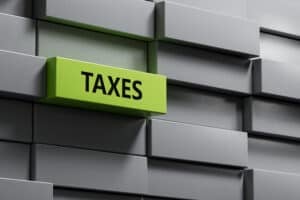And reprioritised government spending must lead to ‘positive outcomes’.

The pressure is on the South African Revenue Service (Sars) to collect sufficient outstanding revenue to prevent additional tax increases of R20 billion in 2026.
Finance Minister Enoch Godongwana said in his third budget for 2025 that he believes Sars will be able to raise an additional R35 billion that will be sufficient to close the current revenue gap.
Kyle Mandy, a tax partner at PwC, says the R20 billion additional tax, which has not yet been specified, is probably the most contentious issue in the budget. There is now a lot of pressure on Sars to collect outstanding taxes on the back of the R7.5 billion over the medium-term additional investment from the National Treasury.
Sars has indicated that it will be able to collect tax debts of between R20 billion and R50 billion per year. It was able to collect R95 billion in tax debt in 2024/25.
ALSO READ: Sensible or underwhelming? Economists react to Godongwana’s Budget 3.0
“There is clearly a reluctance on the part of National Treasury to pencil in revenue expectations from the investment in Sars until such time that Sars proves that they can deliver,” says Mandy.
He explains that from a fiscal point of view, revenue is only accounted for when it lands in Sars’s bank account. Currently, the tax debt book is around R400 billion, and all eyes are now on Sars to make good on its promise to reduce the debt book.
Kabelo Moutloatse, tax accounting specialist at Latita Africa, welcomed the increased investment in Sars to ensure higher tax collections and compliance.
“That is something that we need to see more of to ensure that those who are operating outside of the system are brought in. There has been leakage in the past and that should be worked on.”
ALSO READ: SA loses R30 billion in revenue due to illicit trade in cigarettes and liquor
Growth-enhancing reforms
Business Leadership SA (BLSA) says the focus on growth-enhancing structural reforms is encouraging, with the minister confirming the second phase of Operation Vulindlela’s priority areas, which includes seeing through existing reforms in energy, water, logistics, and the visa regime, with new reform areas being local government, digital transformation, and addressing spatial inequalities.
“The R1 trillion allocation over three years on critical infrastructure is retained, which is important to support many of the above reforms and lift growth prospects.”
ALSO READ: Godongwana cuts government spending to offset VAT shortfall
Lower growth and inflation
Budget 2.0 and Budget 3.0 made no inflationary adjustments for bracket creep or medical aid tax credits.
In March, Treasury expected income of R19.5 billion from individual taxpayers, but this has now been revised downwards to R18 billion.
Government has revised downwards the forecasts for economic growth and inflation, which will have a knock-on effect on revenue.
“So they are pencilling in lower-than-expected increases for salaries and wages,” says Mandy.
He adds that removing the inflationary adjustment for the general fuel levy was not unexpected, given the withdrawal of the Vat rate increase of 0.5%.
Moutloatse says this will certainly impact lower-income households.
ALSO READ: Budget 3.0: First fuel levy increase in three years – Here’s by how much
Many businesses, particularly smaller businesses, will pass this increase on to consumer, reducing their already stretched disposable income.
He adds that one of the key things in Godongwana’s third take is the reprioritisation of spending, moving away from any tax increases.
“We need to see more accountability with programmes and when government spends money it should lead to positive outcomes.”
This article was republished from Moneyweb. Read the original here.






